The design for a new aircraft type to be employed as a combat destroyer was born late in 1934. It had to be an aircraft which, highly manouevrable as a fighter, should be able to engage in air and ground combat as well as perform conventional bombing missions. For this program the Henschel aircraft factory at Kassel, were contracted. Henschel was awarded a development contract for their projected combat destroyer ordered by the RLM under the type designa tion Hs 124 as an alternative solution to Messerschmitt's Bf 110 and the Focke-Wulf FW 57. The prototypes Henschel Hs 124 V1 to V3 went into production late in 1935. The construction of the wing was of all-metal monoco que construction with a shearing web where all lateral force was absorbed by a skin that was reinforced by bicurve profile. This construction was considered by the workshops as ideally suited to duralumin as basic material but was practicable only for the outer wing sections because the need for easy installation in the inner wing sections of the protected fuel tanks and of the undercarriage neutralized all the advantages through the necessity of deviating and concentrating the forces.Another remarkable feat of the Hs 124 design was the layout of the twin fin and rudder assembly with the horizontal tail unit firmly connected to the fuselage in order to prevent elevator flutter. The necessary movement of the fins for trimming was achieved by tilting the movable fuselage rear tip.Armament of the Henschel Hs 124 had been laid out for attack in con formity with the operational tasks. All three prototypes differed in armament: The first prototype, powered by two Junkers Jumo 210 C engines, featured a revolving turret with a 2-cm belt-fed Rheinmetall Borsig gun in the fuselage nose. During the initial trial flights it was purely a mock-up with no weapon. The second prototype Hs 124 V2 was power ed by two BMW 132 Dc engines and featured semi-rigid installation of two 2-cm cannon in a slotted mount with the guns being directed by a separate gunner. They were coupled with the pilot's gunsight in order to permit him to do the firing himself while the gunner operated the horizontally installed range meter. In addition, a bomb sight for dropping small-caliber fragmentation bombs on lower flying bomber units was fitted.
While the first two prototypes featured a bomber layout with a crew of three, the third prototype Hs 124 V3 was a pure destroyer flown by a crew of two. For the latter purpose all attack weapons were mounted rigidly in the fuselage nose, firing forward. Armament then comprised two 2-cm cannon, two 7.9-mm MG 17's, and the fragmentation bomb sight known from the Hs 124 V2. Power was initially provided by two Junkers Jumo 210 C engines which however were considered insufficient for destroyer missions. Therefore, the essentially higher rated Daimler-Benz DB 601 A injection engines were envisaged, but did not become available for this prototype. Soon then it was fitted with two BMW 132 Dc engines which had already proved adequate in the Hs 124. The strength of the aircraft thus lay not so much in its speed but in its good flying cha racteristics. These proved to be so excellent that aerobatics, such as loops, rolls, turns, and sideslips, could be executed without difficulty and were even officially approved. The maximum load factor in pull-out was 10.5 at full take-offweight for the bomber variant; for the destroyer and strafing variant it was 11.2, and for the long-range reconnaissance variant which had a lower take-off weight it even reached 12. Maximum dive speed was fixed at 550 kmlh, the same performance as prescribed for the Messerschmitt Bf 109 D fighter.
Owing to the protracted decision in the question of power plants the production program for the Hs 124 did not exceed the three prototypes. Since even the delivery of guns was delayed the three machines could only be assigned to the training role after their flight evaluation. In this capacity it frequently out-manoeuvered the Messerschmitt Bf 109 in mock aerial fights.

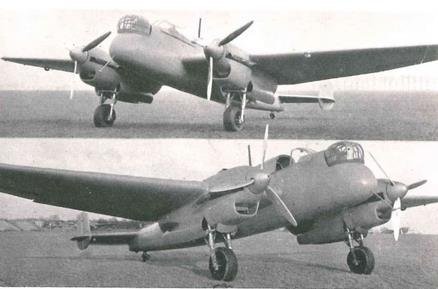
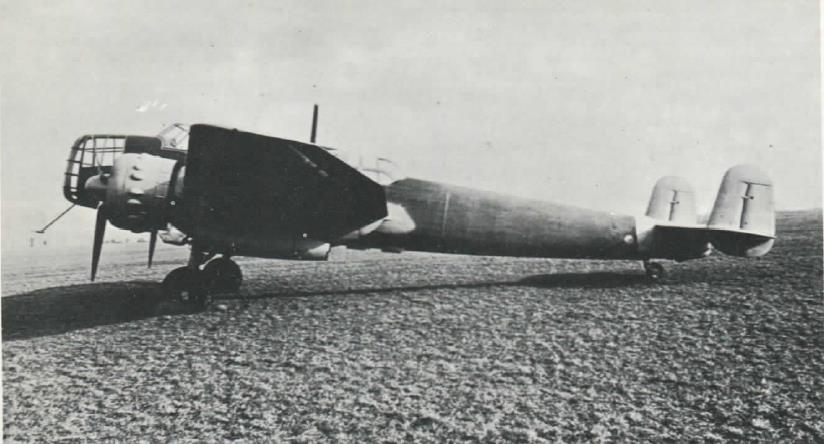
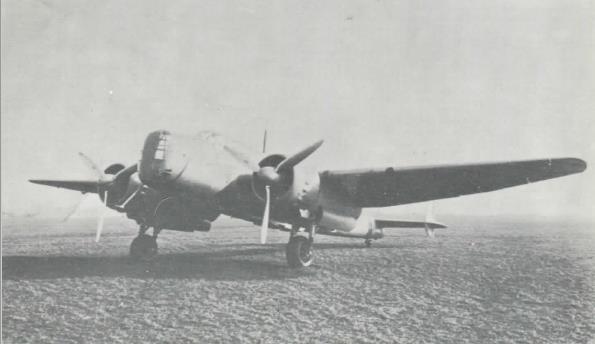
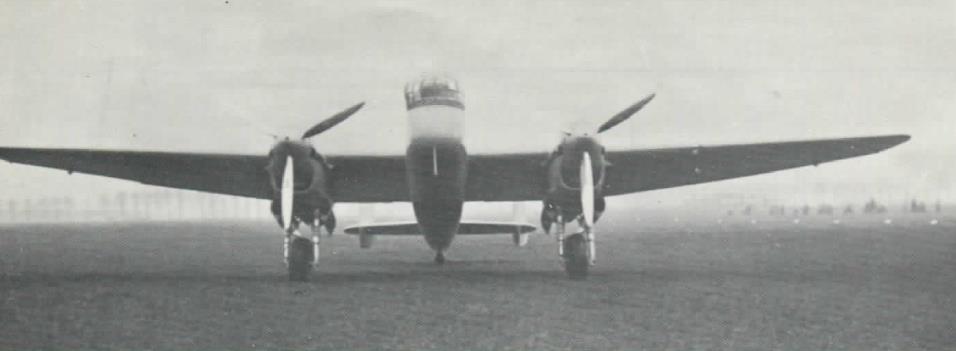
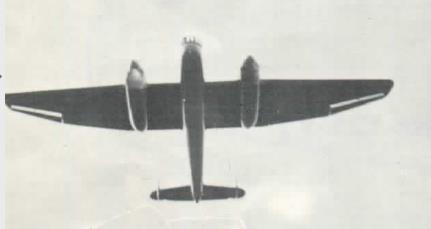

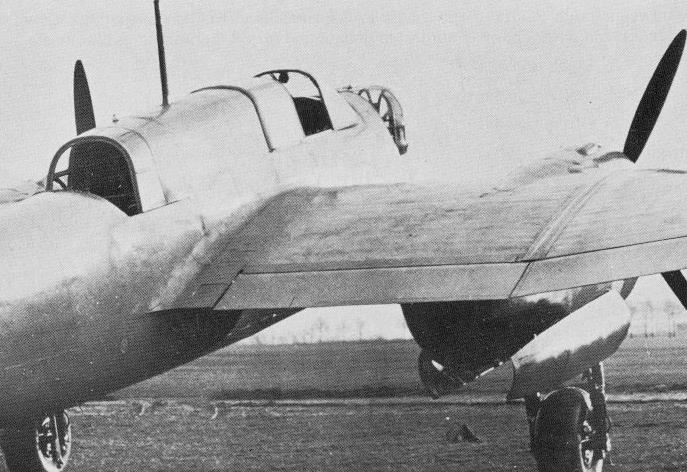
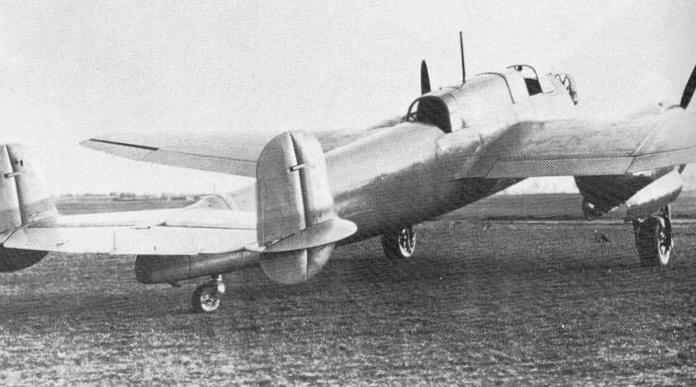
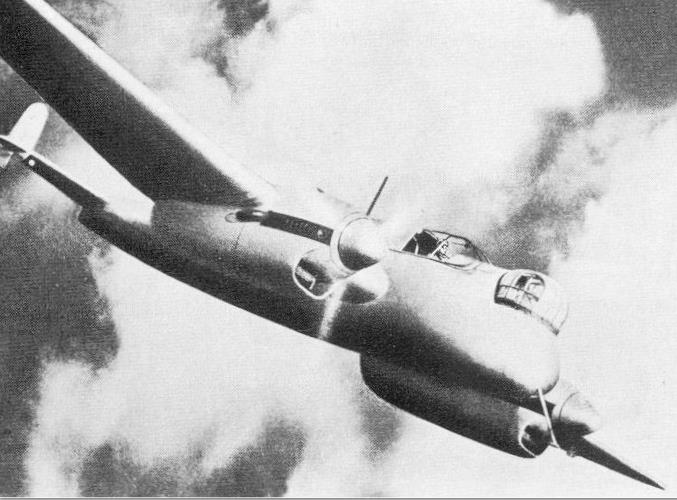
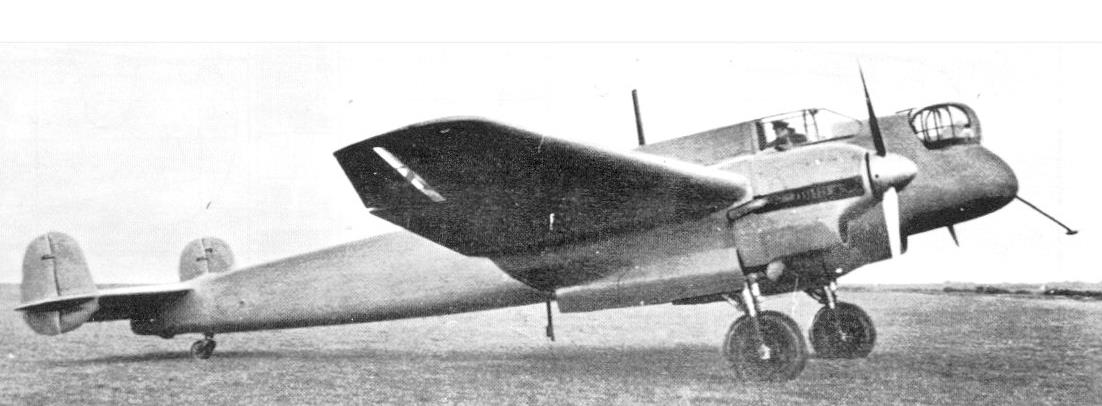

| Type |
V1 3 -seat bomber |
V2 3-seat bomber |
V3 2-seat heavy fighter
|
| Engine |
2 Junkers Jumo 210C with 3-bladed VDM variable pitch metal prop. Dia 3.30 m |
2 BMW 132 Dc with 3-bladed VDM variable pitch metal prop. Dia 3.30 m |
2 Junkers Jumo 210C later 2 BMW 132 Dc with 3-bladed VDM variable pitch metal prop. Dia 3.30 m |
| Dimensions |
Length 14.50 m, span 18,20 m, height 3.75 m, wing area 54.60 m2 |
| Weights |
Empty 4250 kg, with equipment 4870 kg, fuel 1340 kg, oil 100 kg, weapons 650 kg, flying weight 7230 kg |
| Performance |
Max. speed at sea level 363 km/h, at 3000 m 410 km/h, at 6000 m 385 km/h, cruising speed at sea level 320 km/h, at 3000 m 370 km/h, stall speed (fully extended flaps - 25°) 116 km/h, landing speed 100 km/h, climb to 2000 m 4.4 min., to 4000 m 9.3 min., to 6000 m 17,1 min.., service ceiling 7900 m, range (fuel 1300 kg) at sea level 1820 km, at 3000 m 1860 km, at 6000 m 2450 km, max. range 4200 km (extra fuel and reduced weapons load), required runway (full load) 260 m, to 20 m altitude 540 m, required runway for landing (from 20 m altitude) 250 m |
| Armament |
|
| Type |
Werk.Nr |
Registration |
History |
| V1 |
|
|
The machine received two Jumo 210 C engines and a smooth sheet bending in which
a rotating tower was installed. The tower should be equipped with a 2 cm cannon. The machine flew however the first trials without weapon. |
| V2 |
|
|
Another armament with a new fuselage front were used in this installation:
Glazed nose with a 2 cm cannon protruding in a gap. Movable in a range of 30° upwards. 40° downwards and 20° each to the sides. For the use of small splinter bombs was a bombsight installed The Hs 124 V2 received two BMW 132 Dc engines, which gave this aircraft the characteristic appearance. |
| V3 |
|
|
The Hs 124 V3 was built as a heavy fighter. For this reason the machine received a
cockpit with two crew members. In the fuselage front a rigid built-in armament with 4 MG 17 or two 2-cm-MG and two MG 17. The engine plant was originally two Jumo 210 C and later two BMW 132 Dc engines. |











